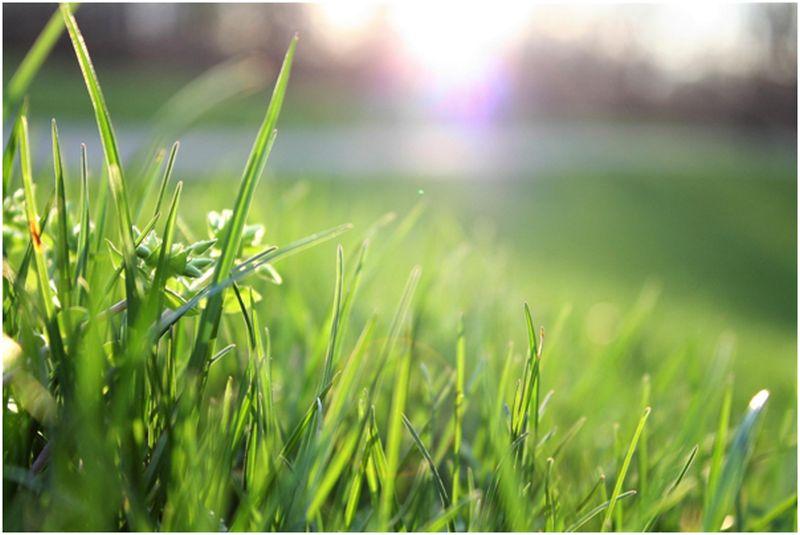Achieving a lush, vibrant, and healthy lawn is a dream for many homeowners. However, maintaining a perfect lawn throughout the seasons requires consistency, effort, and know-how. This guide will discuss the steps for achieving a beautiful lawn, from the initial preparations to seasonal maintenance strategies. Let’s dive in!
1. Preparing Your Lawn
The first step to achieving a lush lawn is to assess the current status of your turf. Look for bald patches, weeds, thinning grass, unwanted insects, or any other signs of an unhealthy lawn. You can also visit the golf course lawn store blog for more information on weeds and other potential lawn issues. This assessment will help you create a tailored plan to address the specific issues you encounter.
Choosing the right grass seed variety is crucial to the success of your lawn. Research the different varieties that grow well in your region, taking into account your climate, soil type, and the amount of sunlight your lawn receives. Some grasses thrive in shade, while others need full sun exposure. Once you’ve narrowed down the options, choose the variety that best suits your lawn conditions and usage.
Proper soil preparation is essential for healthy grass growth. Start by performing a soil test, which provides valuable information about the soil’s pH and nutrient levels. Based on the results, amend the soil by adding organic matter, such as compost or manure, along with any necessary nutrients or pH adjustments. Additionally, loosening the soil to a depth of 4 to 6 inches using a tiller or garden fork creates a welcoming environment for grassroots.
2. Seeding and Watering
Begin sowing the grass seed according to the package instructions, ensuring even coverage. If you’re overseeding an existing lawn, use a broadcast spreader to disperse the seed throughout the turf. Water the lawn thoroughly and keep the soil consistently moist for the next few weeks to encourage germination. Avoid over-watering, as this can lead to the growth of mold and diseases.
One of the best ways to maintain a lush and healthy lawn is to aerate and over-seed it annually, usually in the fall. Aeration involves using a specialized tool to create small holes in the soil, which allows water, air, and nutrients to reach the grassroots more efficiently. This process promotes deeper root growth and better overall turf health. Overseeding helps to thicken the lawn, improve its appearance, and reduce weed infestations by filling in gaps between existing grass plants with new seedlings.
Establishing an appropriate watering schedule is also important to the success of your lawn. Under-watering can lead to a weak, shallow root system while over-watering can promote disease and lead to wasted resources. The ideal watering frequency and duration depend on your region’s climate, as well as your soil type and grass species. As a general rule, aim to provide your lawn with 1 inch of water per week, either through rainfall or supplemental irrigation.
3. Proper Maintenance
Maintaining proper mowing and fertilizing practices is vital for a thriving lawn. Wait until your grass reaches about 3 inches in height before the first mow, then maintain a consistent mowing schedule. Do not remove more than 1/3 of the grass height in a single mow. Regarding fertilization, it’s best to measure the lawn’s specific needs based on soil test results. As a general recommendation, apply fertilizer in the spring, summer, and fall, using a high-quality, slow-release product.
Your lawn requires different care throughout the seasons. In the spring, focus on soil aeration and dethatching. During the summer, pay attention to proper watering and mowing techniques, as well as pest and weed control. Prepare your lawn for winter dormancy by fertilizing and reducing the watering frequency in the fall. Lastly, remember to keep the lawn free of debris and leaves as the seasons change, preventing any choking or hindrances to growth.
Finally, don’t forget the importance of properly maintaining the tools and equipment you use for lawn care. Sharpen mower blades routinely to ensure a clean, even cut, which minimizes stress on the grass and lowers its susceptibility to diseases. Clean your spreaders, sprayers, and other tools after each use to prolong their life and avoid cross-contamination of materials. By taking good care of your equipment, you can ensure better lawn care results and greater overall efficiency.
Addressing Any Issues
Addressing weeds early and consistently is key to maintaining a lush lawn. Hand-pulling weeds is often the safest and most effective method for small-scale weed problems. For larger infestations, consider using pre-emergent or post-emergent herbicides as required. Always apply weed control products according to the label instructions.
Keep a close eye on your lawn for pests and diseases that can negatively impact its health. Some common lawn pests include grubs, sod webworms, and mole crickets. Be proactive in addressing these issues by employing natural or chemical controls as needed. In the case of fungal diseases, follow proper watering, mowing, and fertilization practices to prevent their growth in the first place.
Achieving a lush, healthy lawn throughout the seasons takes dedication and commitment to proper practices. By following this guide, you’ll be well-equipped to cultivate a thriving, vibrant lawn that’s the envy of your neighbors. Now, get ready to roll up your sleeves and achieve the lush, green lawn of your dreams!
Article Submitted By Community Writer




